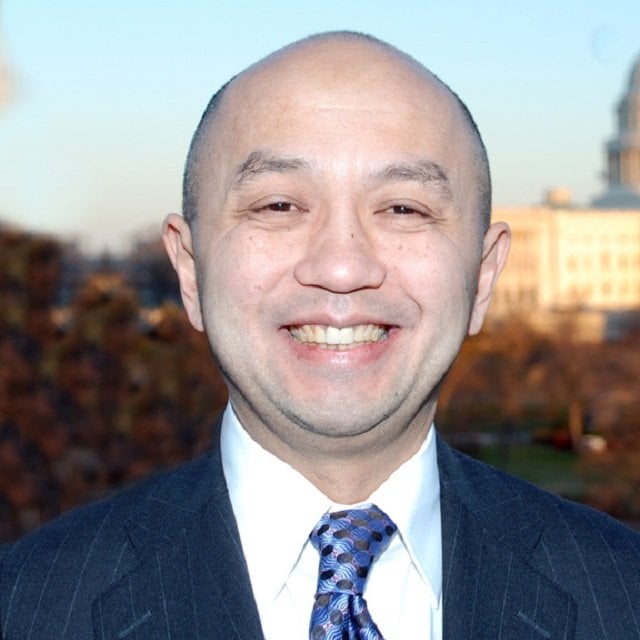5 Cash-Flow Challenges That Might Catch Life Insurers Off Guard

What You Need to Know
Edward Toy is a former portfolio manager who set up the NAIC Capital Markets Bureau.
He worries that insurers’ investment risk modeling efforts focus on past problems and don’t anticipate future issues.
He wants companies to think harder about the cash coming in and going out.
Some life insurers may not understand what rising interest rates and increased market volatility will do to their investment cash flow, an insurance investment expert said last week.
Edward Toy, an insurance company financial examiner, said those life insurers have focused mainly on long-term asset adequacy without thinking enough about how much money might be going into their investment portfolios — and coming out — in the near term.
“One of the lessons I have learned over many years is that, the more you focus on dealing with yesterday’s problem, the more you are not focusing on what the next problem is,” Toy said, in Washington, during a general session at the annual meeting of the American Academy of Actuaries.
Toy suggested that a new problem could be that some life insurers might have coped with low interest rates by agreeing to lock up assets for longer than before in exchange for higher rates of return, without knowing what the flow of cash produced by those less-liquid assets would look like during a period of rapidly rising interest rates and high market volatility.
What It Means
Rising interest rates should help bond yields, investment returns and long-term performance at the life insurers backing your clients’ life insurance and annuity benefits guarantees, according to most insurance industry observers.
But, if Toy is correct, some life insurers could go through challenging times before higher rates make their asset managers’ jobs easier.
Edward Toy
The American Academy of Actuaries is a group that represents actuaries, or people who have shown that they know and can apply the math needed to analyze insurance, pensions and other topics that involve elements of risk or uncertainty.
Toy appeared during an annual meeting session on the effects of the emergency of private equity owners on life insurers.
Toy has a bachelor’s degree from Dartmouth and a master’s degree in business from Wharton. He started out as a money manager at TIAA, and he later was director of trading and a portfolio manager at Artesian Capital Management.
In 2009, he began helping the National Association of Insurance Commissioners respond to the 2007-2009 Great Recession, by setting up its Capital Markets Bureau.
In 2018, he began working for Risk & Regulatory Consulting in Stamford, Connecticut, as an insurance specialist.
He helps insurance regulators conduct financial examinations of insurance companies and handle other matters that require knowledge of insurance company investments.
“There’s just one company, of all the ones that I’ve done an exam on that, that said, ‘We’re taking a lot of investment risk, and we have a lot of systems in place to address that investment risk, and we are constantly, constantly updating our monitoring systems, because everything is always changing,’” Toy reported. “Everybody else that I’ve done an exam on, to varying degrees, said, ‘Oh, no, we understand what we’re doing; don’t worry.”
Many companies talk about their sophisticated investment risk modeling efforts. Insurer confidence in the completeness of risk models frightens Toy.
“Once you get comfortable with your model, you’re going to realize that there are two or three variables that you’re missing in that model,” Toy said. “Because the model dealt with last year’s problem, and what you’re trying to figure out is next year’s problem.”
The Last 30 Years
Toy said next year’s problems could be different partly because the world is different, and because life insurance companies run their operations differently.
Toy began working for TIAA in 1983, when defined benefit pension plans were still common in the United States and the 401(k) plan program was just five years old.
He was there before the 1987 Black Monday stock crash; the 2001 burst of the Dot-Com Bubble; the Great Recession; and the turmoil that occurred in March 2020 as lockdown rules related to the COVID-19 pandemic clamped down over the United States and much of the rest of the world.
“When I started in this business — way too many years ago — the typical life insurance company portfolio was 30% investment-grade utility bonds,” Toy recalled. “That world simply does not exist anymore.”
Whether a life insurer is owned by private equity investors, public shareholders or other types of owners, it might now be using capital from reinsurers to finance its business, and it might have hired outside investment managers.
The outside investment managers have an incentive to generate extra fees and justify their fees by increasing investment returns, by moving the life insurer away from what might have been overly conservative investment practices, Toy said.
He noted that life insurers might have coped with low interest rates and the need for higher returns by allocating more assets to investments that lock in cash for a long time or that have guaranteed returns but variable payment streams, such as construction loans, private equity funds and structured notes.
Potential Sources of Cash-Flow Problems
In some cases, Toy said, life insurers might have kept their exposure to credit default risk about the same but increased their risk of running low on cash.
“What I worry the most about is market value volatility,” he said. “These things where the fair market value at any given point in time, depending on what’s going on in the marketplace and the economic environment, could be all over the place.”
Here are five areas that Toy views as being potential causes of unexpected cash-flow challenges.
1. Rising rates might change how an ordinary investment works.




